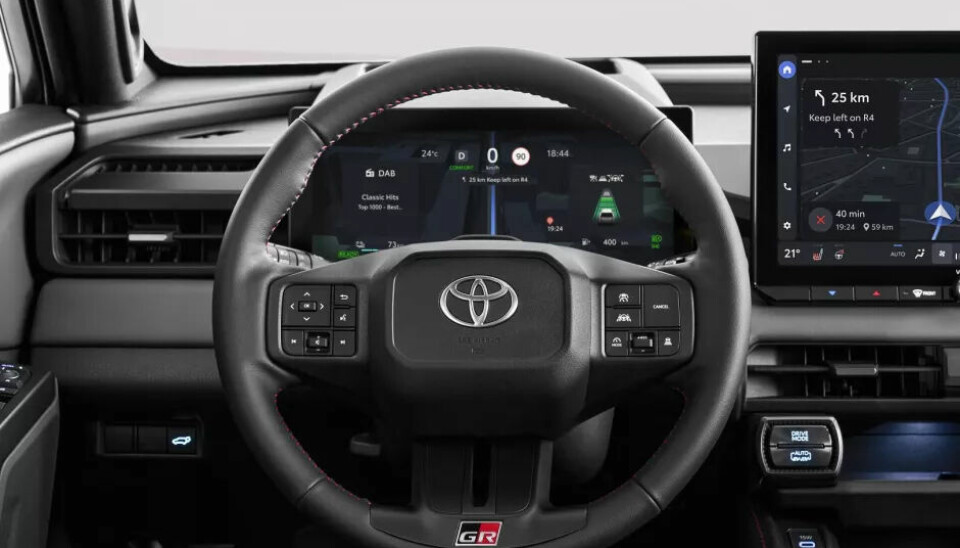Software Defined Vehicles
RAV4 and New Academy
Toyota Launches Software Offensive

With the sixth generation of the RAV4, Toyota is presenting not only an evolved SUV, but also the new software platform Arene and a dedicated software academy. The goal: a digital driving experience and the training of new AI and software experts.
Although the world’s largest carmaker has gained four positions in the latest Future Readiness Indicator from the International Institute for Management Development, Toyota still only ranks seventh in terms of overall future viability. According to the institute, investments in brand and customer experience are essential to remain competitive in the long term. The Japanese manufacturer seems to have taken this to heart: in order to catch up on future readiness, Toyota is now launching its own software academy.
With the world premiere of the new Toyota RAV4, the Japanese automotive group is also aiming to take a step towards software-defined vehicles and digital mobility. The sixth generation is not only about a new vehicle architecture and an updated plug-in hybrid system, but above all about a comprehensive digital ecosystem, which Toyota is enabling through its new software platform Arene. According to Toyota, the newly established software academy is intended to significantly improve both the user experience and the speed of development for new safety- and comfort-related features. So what lies behind it?
Arene enables digital driving experience
With Arene, Toyota is introducing a completely new software platform designed to initiate the transition to fully software-defined vehicles. It forms the foundation for modern safety, assistance, and infotainment systems, which are available for the first time in the new RAV4. Toyota highlights that the digital architecture enables quicker responses to changing requirements, for example through OTA updates, while also ensuring a consistent user experience across all digital touchpoints.
Specifically, Arene allows for the introduction of a new generation of driver assistance systems, such as an improved Pre-Collision System, an active lane change assistant, and a new Front Cross Traffic Alert. Advanced geo-fencing ensures that the plug-in hybrid switches to electric mode automatically in sensitive zones. Parking can also be managed via smartphone. According to Toyota, by combining safety features with digital controls such as a cloud-based navigation system and an intuitive voice assistant, a holistic new driving experience is being created.
RAV4 as a carrier of a new software mindset
With the new RAV4, Toyota is demonstrating its strategy to more tightly integrate software and hardware development. The plug-in hybrid version with a new 23 kWh battery offers an electric range of up to 100 kilometres according to WLTP standards – combined with short charging times thanks to optional DC fast-charging capability of up to 50 kW. The modified drivetrain also contributes to improved driving dynamics, while new assistance functions and the digital cockpit make the vehicle a flagship for Toyota’s new software philosophy.
Toyota also speaks of an entirely new digital experience, based on customisable user interfaces, an updated multimedia system, and integration of the latest MyToyota app with extended remote services. This digital extension of the vehicle experience is expected to set new standards through features such as a more powerful voice assistant, real-time navigation, and continuous OTA updates – according to the company.
AI and software development
In parallel with its product strategy, Toyota is also expanding its digital capabilities at the human capital level. With the newly launched Toyota Software Academy, the company aims to train a new generation of AI and software experts, working in collaboration with group companies Aisin, Denso, Toyota Tsusho, and Woven. The academy is launching with a hybrid training model consisting of online lectures and hands-on training at company-owned research facilities.
Toyota states that around 100 courses will cover topics such as artificial intelligence, cybersecurity, regulatory frameworks, and software-driven vehicle development. The programme is explicitly interdisciplinary and aims to foster both software and hardware understanding. Particular emphasis is placed on applied learning – for example through the development of features in real vehicles.
The initiative is accompanied by a second strategic pillar: the Global AI Accelerator (GAIA). This programme aims to accelerate Toyota’s internal AI development, implementation, and capabilities. Initially, GAIA will focus on eleven application areas, including ADAS, materials research, in-car agents, office productivity, and robotics. In the long term, the accelerator is expected to boost both team productivity and innovation in product development.
Focus on digitalisation
With the launch of the new RAV4 and its accompanying software initiative, Toyota aims not only to digitally enhance its existing products, but also to significantly modernise its development capabilities and methodologies. The integration of the Arene platform and the founding of a dedicated academy demonstrate that Toyota increasingly sees the car of the future as defined by code and user experience. Whether – and how quickly – this transformation succeeds remains to be seen. One thing is clear: by combining innovative vehicle technology, a software-centric mindset, and a clear employee qualification strategy, Toyota is sending a strong signal – and may well move further up the future readiness rankings as a result.
This article was first published at automotiveit.eu

